Wisconsin has about seven hundred different animal and wildlife species, and the American badger is considered the state animal of Wisconsin. The landscape of Wisconsin includes beaches, wetlands, woodlands, rivers, and hills.
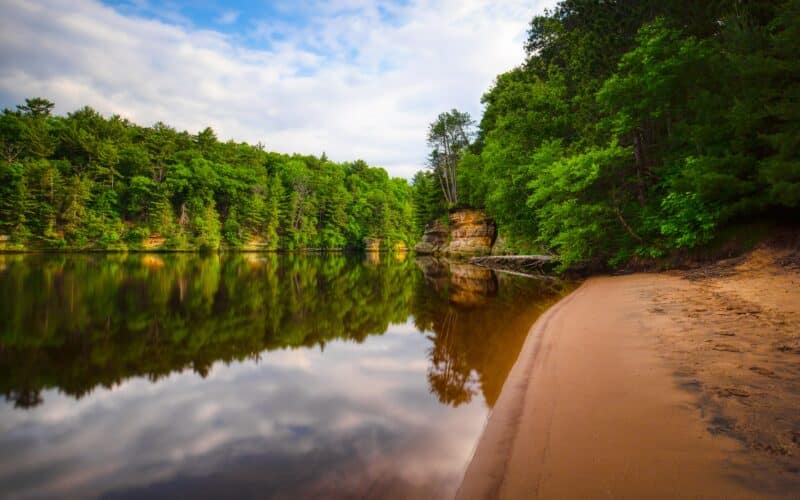
The kind of untamed life a tourist finds in Wisconsin relies upon where they travel. Making a trip to the Wisconsin marshlands allows tourists to see red-upheld lizards, snapping turtles, mink frogs, American bullfrogs, five-lined skinks, stream otters, beavers, American bitterns, and Sandhill cranes.
Looking at the forest regions in the state offers tourists the chance to see endless vertebrates, including red foxes, raccoons, white-followed deer, striped skunks, dim squirrels, and cottontail bunnies. Birds, including mallards, chestnut-sided larks, pileated woodpeckers, and bobolinks, can likewise be found in the forests of this state. Lake Michigan borders Wisconsin and is home to many kinds of untamed life.
Click below to jump to a section on animals in Wisconsin:
Deer Mouse

They have protruding eyes and gigantic ears, weigh 15 to 110 grams, and are 8 to 17 cm long. The tail might be more limited than the head and body or strikingly longer, contingent upon the species. All deer mice have delicate fur, yet variety fluctuates between and inside species. The skin is almost white in specific populations of cotton mice in the southeastern United States. Yet, it can go from dim to dazzling buff, brown, ruddy brown, and blackish, which possesses the mountain woodlands of southern Mexico.
Species residing in dull and wet backwoods often have dim coats, while those adjusted to deserts and grasslands are primarily pale; all have white feet. Deer mice are nighttime yet are incidentally dynamic in the afternoon. They spend golden hours in tunnels or trees, building homes of plant material. Albeit earthly, they are deft climbers. Their eating routine incorporates everything, from plant items and growths to spineless creatures and remains.
It is sometimes called the white-footed mouse and has the broadest geographic circulation of any North American rat. Found from Canada to subtropical Mexico, it lives in a staggering scope of natural surroundings between the Canadian tundra and the Sonoran Desert; it likewise lives in calm and boreal timberlands, fields, and clean developments.
Females produce up to four litters each year following 21 to 27 days’ incubation, and each junk mainly contains three to five youthful (one to eight are limits). In the mid-21st 100 years, a few developmental scholars stated that the various changes happening in the fur of a populace of P. maniculatus were perhaps the perfect illustration of regular determination.
Research suggests that a quality related to lighter-shaded fur, nicknamed Agouti by researchers, usually arose somewhere in the range of 8,000 and 15,000 quite a while back in some deer mice that occupied a remarkable sand ridge climate in Nebraska, U.S. This transformation permitted a few mice to disguise themselves against the sand-hued foundation of the ridges more readily.
It is believed that north of thousands of ages, the recurrence of the Agouti quality expanded in this populace while the reproduction of the quality related to hazier fur declined. A few researchers battle that the various changes happening in deer mice might act as a more helpful illustration of everyday choice in real life than the nineteenth-century variety change seen in peppered moths (Biston betularia) in England that was ascribed to modern melanism.
Where to find Deer Mice in Wisconsin:
They are mostly found living in woodland areas but also in desert areas.
Fox Squirrel
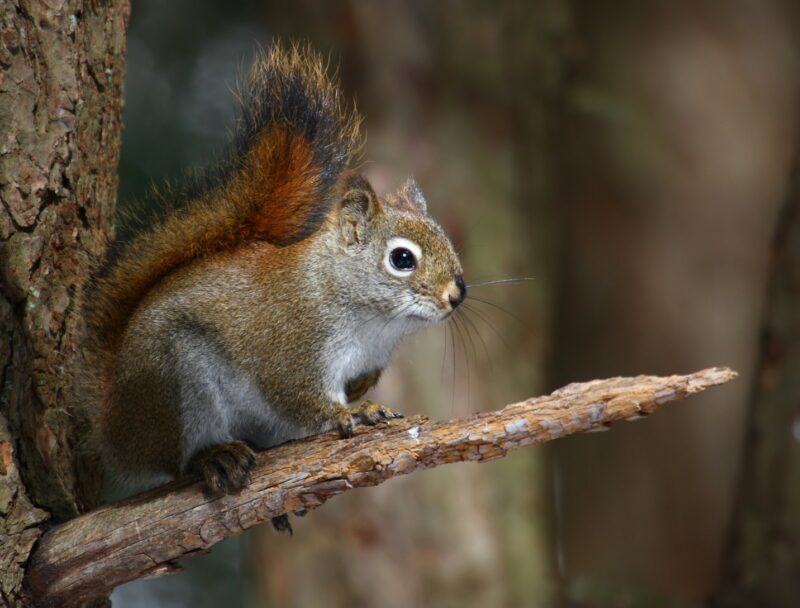
The squirrel’s total length is estimated to be 20 to 30 inches, with a body length of 10 to 15 inches and a comparable tail length. They range in weight from 1.0 to 2.5 pounds. There is no sexual dimorphism in size or appearance, and people will often be more modest in the west. There are three particular topographical stages in tinge.
The creature’s chest area is brown-dim to brown-yellow in many regions, with a regular caramel-orange underside. At the same time, in eastern locales, for example, the Appalachians, there are all the more strikingly-designed dull brown and dark squirrels with white groups on the face and tail. In the south are detached networks with uniform dark coats. To assist with climbing, the fox squirrels have sharp paws, created extensors of digits and flexors of lower arms, and stomach muscular structure.
Fox squirrels have superb vision and evolved feelings of hearing and smell. The genuine types of pines and oaks themselves may not generally be a considerable thought in characterizing fox squirrel living space. Fox squirrels are often noticed rummaging on the ground a few hundred meters from the closest woodlot. Fox squirrels additionally usually possess woods edge living space. Food propensities for fox squirrels rely to a great extent upon the geographic area.
Generally, fox squirrel food sources incorporate poles, tree buds, bugs, tubers, bulbs, roots, bird eggs, pines and spring-fruiting trees, and parasites. Horticultural harvests like corn, soybeans, oats, wheat and organic product are additionally eaten. Pole eaten by fox squirrels generally incorporates turkey oak, southern red oak, blackjack oak, blue jack oak, post oak, and live oak.
Where to find Fox Squirrels in Wisconsin
Fox squirrels are most bountiful in open woods remains with little understory vegetation; they are not found in remains with thick undergrowth. Ideal living space is little stands of giant trees blended with horticultural land. The size and dispersing of pines and oaks are among the significant highlights of fox squirrel territory.
Eastern Grey Squirrel
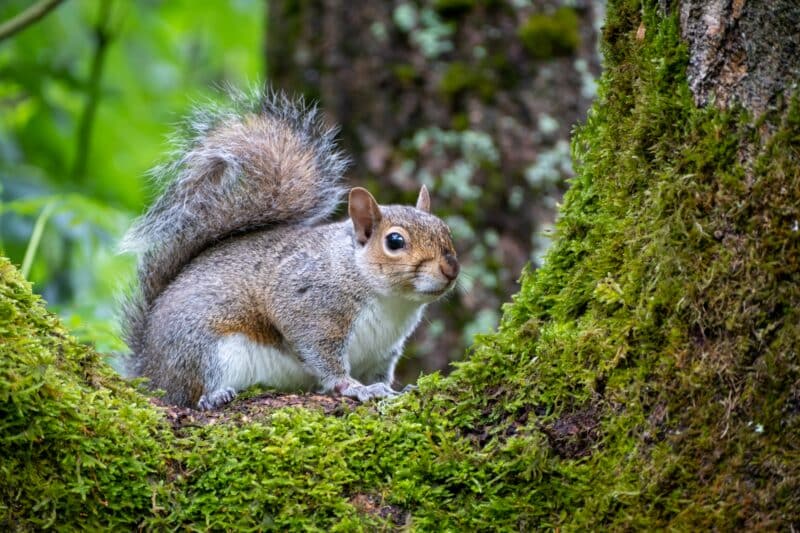
Eastern dim squirrels scavenge for seeds, nuts, buds, and blossoms of trees. Like other tree squirrels, the east fuzzy squirrel assumes a significant part in what’s known as seed dispersal. As winter draws near, squirrels convey their food and cover it in a few areas, and they conceal more food than they will recuperate or eat. The covered seeds and nuts fledgling and start to fill in these areas in the accompanying spring. Eastern dim squirrels have a phenomenal feeling of smell, which they use to assist with finding food that they’ve stowed away. They can likewise get data about their kindred squirrels by smelling them.
They speak with one another by uttering sounds and body developments, for example, tail flicking. Whenever hunters, for example, red foxes and red-followed falcons, are nearby, eastern dark squirrels will sound admonition calls to caution different squirrels. Female eastern dark squirrels might begin having infants as youthful as five and a half months old. Females can have a litter double yearly, comprising two to four children. They assemble leaves and twigs, fabricate high in the trees to house their young posterity, or use tree pits as nooks. Infant eastern dim squirrels don’t have fur when conceived and can’t see.
They frequently weigh as little as a portion of an ounce. They leave home by around ten to twelve weeks old and become entirely become by about nine months. Tree squirrels have thin, slender bodies, long, solid appendages, and furred feet. The forefeet have four long digits and a short, squat thumb, and the five-toed rear feet are restricted or respectably wide. The uncovered bottoms of the feet appear as unmistakable, meaty cushions. Since the lower leg joints are adaptable and can be pivoted, squirrels can quickly dive trees recklessly with the rear feet spread level against the storage compartment.
Their vast, brilliant eyes convey a ready disposition, and the expansive, short head tightens to an unpolished gag enhanced with long bristles. The adjusted ears, little according to body size, are thickly covered with short, fine hairs, which structure a long tuft at the tips of the ears in certain species.
The tail is comparably lengthy as the head and body or longer. Furred from base to tip, the bottom seems ragged and tube-shaped when the hairs develop equally around the bottom; the bottom appears to complement, assuming the fur begins just from inverse sides. Hooks are enormous, solid, bent, and extremely sharp, which empowers tree squirrels to explore vertical surfaces and thin branches.
Where to find Eastern Grey Squirrels in Wisconsin
They mostly live in woodland ecosystems, large areas with other animals in Wisconsin.
Groundhog
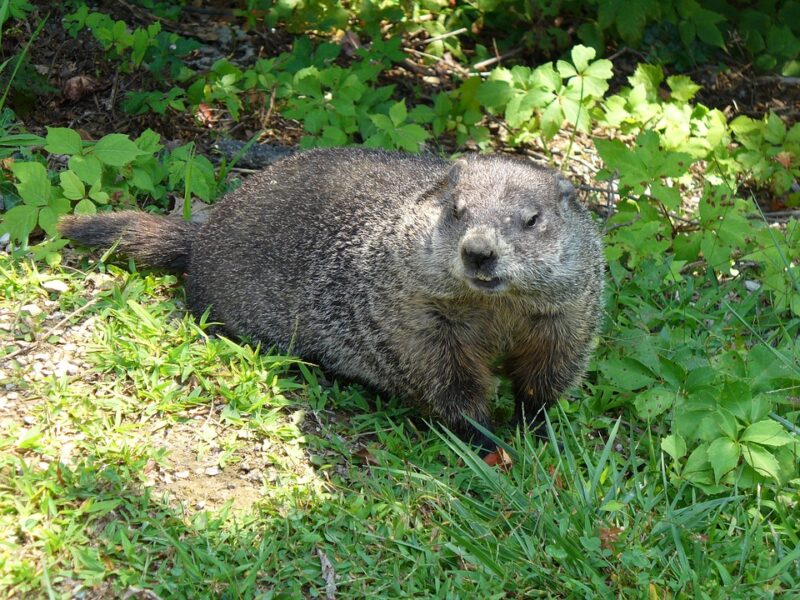
It is, in some cases damaging to nurseries and pasturelands. The groundhog is a marmot from the squirrel family, Sciuridae, inside the request Rodentia. As per a well-known legend in the United States, it rises out of hibernation every year on February 2, assigned as Groundhog Day. Assuming it sees its shadow, winter will last six additional weeks. This solid-bodied rat gauges up to 6 kg and has a short, rugged tail up to 18 cm long.
Thick fur on the upper parts ranges in variety through shades of brown; the feet are more obscure, and the underparts are buff. Melanistic (almost dark) and pale-skinned people happen here and there in specific populations. Found from the eastern and focal United States toward the north across Canada and into Alaska, they most normally live along backwoods edges adjoining knolls, open fields, streets, and streams, yet they are often additionally experienced in thick woods.
The groundhog is lone besides in the spring when a litter of four to six youthful is conceived—the young stay with the mother for a few months. Although groundhogs dig profound and broad tunnel frameworks, they are likewise great swimmers and can climb tall bushes and sizable trees. They are most dynamic toward the beginning of the day and evening, eating grasses and other green plants and a few foods grown from the ground bark and buds of trees.
They feed intensely in summer and late summer, collecting colossal fat stores for the colder time of year. The creature is a genuine hibernator. It twists into what seems, by all accounts, to be a dead ball, its internal heat level drops almost to the surrounding temperature of the tunnel, and its pulse diminishes from 75 to 4 beats each moment.
Throughout the cold weather, the tunnel may likewise give safe houses to foxes, skunks, the Virginia opossum, raccoons, and different creatures, especially cottontail hares. Groundhogs were once the objects of game hunting and are viewed as very consumable.
Where to find Groundhogs in Wisconsin
Groundhogs in New Jersey live in streams, meadows, open fields, forest edges, roads, and other animals in Wisconsin.
American Marten
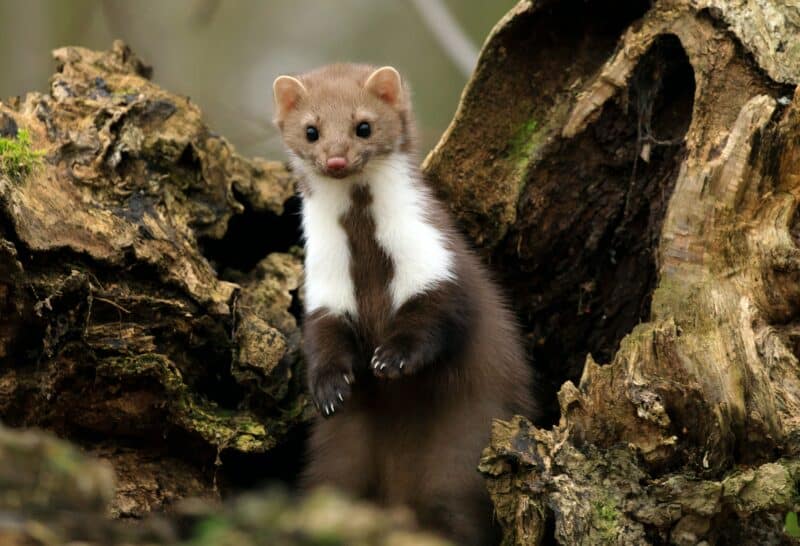
American Marten belongs to the family Mustelidae and is also known as American pine marten; it belongs to the North American mammal species. The name pine marten comes from the common name of the Eurasian species. It is found widely in Canada. It is a tiny animal that likes to live on trees. American marten has a slim body with short legs.
It’s claws are curvy, which helps them to climb trees properly. AmericaItsrten has a pointed nose, broad head, and round years. It has a breastplate of cream and orange color present on its chest and throat. They are primarily found in the northern forests. American martens love to live alone. American marten avoids interacting with another marten, but as the mating season comes, they leave their dens and look out for mates. They are tree-dwelling animals and move on trees.
American martens have specialized odor glands, which they use for. They hunt in the early morning or dusk as it is the time in prey are primarily active, and they are more active during winter. American Marten is both nocturnal and diurnal, and it can swim underwater and thus is a great swimmer. They have such a fast speed that they can travel through many trees without falling on the ground. They are omnivores as they eat both plants and animals.
Where to find American Martens in Wisconsin
It is found in the Atlantic provinces.
Canada Lynx
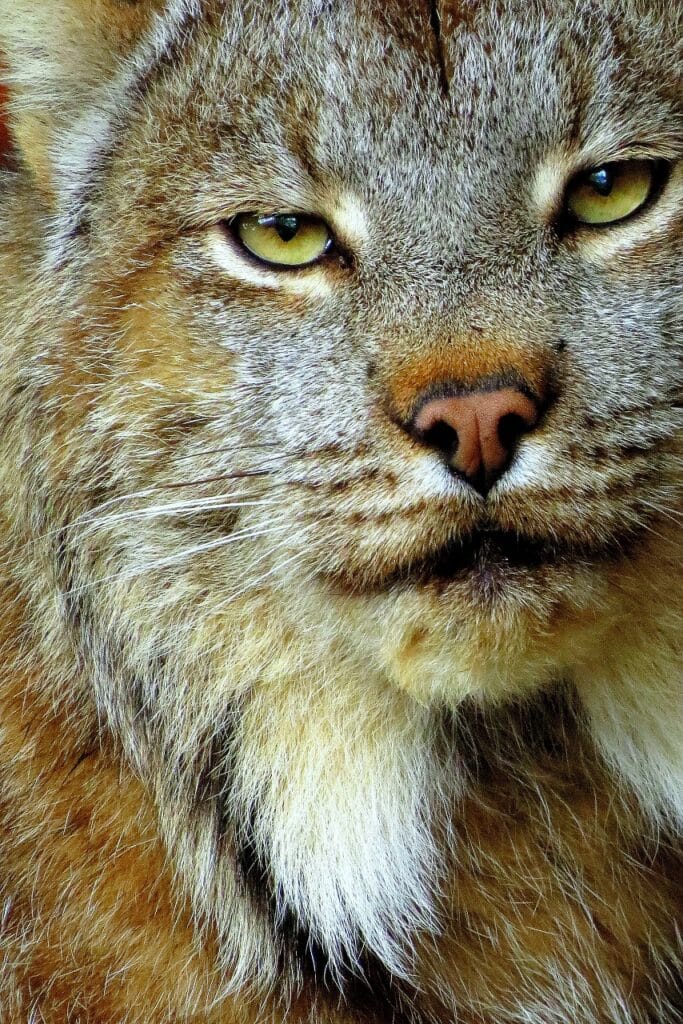
The Canada lynx is like the wildcat, yet its more drawn-out legs, more extensive feet, longer ear tufts, and more conspicuous dark-tipped tail can be recognized. The heaviness of a grown-up goes from 8.0 to 17.3 kg, and its length goes from 67 to 107 cm. On average, its tallness at the shoulder is 61 cm. The Canada lynx is likewise recorded as an inner worry by the IUCN, yet being a compromised animal category in the United States is considered.
Currently, the species is found in the boreal woods all through Canada (except Nova Scotia) and in the U.S. provinces of Washington, Idaho, Montana, Minnesota, New Hampshire, and Maine in environments incidental to that of the snowshoe bunny. In the southern part of its reach, the Canada lynx’s eating routine is expanded: it goes after carcasses and potentially even young ungulates.
Canada lynx have been pursued and caught for their fur for many years, yet the degrees of northern populaces have remained genuinely stable over the long run. Southern populaces, particularly those in the commensurate United States, are compromised by living space misfortune and fracture from logging and farming transformation. Numerous people are casualties of vehicle strikes or are caught in traps implied for different species. Renewed introduction programs started in the mid-21st century, in which gatherings of creatures were delivered in other pieces of the Rocky Mountains, have met with moderate achievement.
Where to find Canada Lynx in Wisconsin
Lynx are found in boreal forests, which are cold with some moisture conditions, alongside other animals in Wisconsin.
Summary of Animals in Wisconsin
Looking at the forest regions in the state offers guests the chance to see endless vertebrates, including red foxes, raccoons, white-followed deer, striped skunks, dim squirrels, and cottontail bunnies. Birds, including mallards, chestnut-sided larks, pileated woodpeckers, and bobolinks, can likewise be found in the forests of this state.
Lake Michigan borders Wisconsin and is home to many kinds of untamed life. Guests might see trout, bass, walleye, and catfish. Painted turtles are likewise a typical sight. Warm-blooded animals like wild bears, dim and red foxes, woodchucks, and squirrels should also be visible close to the coastline. Mountain lions may be found in Wisconsin as well. The landscape of Wisconsin includes beaches, wetlands, woodlands, rivers, and hills.
There are about seven hundred different species that are found in Wisconsin. The American badger is considered the state animal of Wisconsin. The kind of untamed life a guest finds in Wisconsin relies upon where they travel.
Making a trip to the Wisconsin marshlands allows guests to see red-upheld lizards, snapping turtles, mink frogs, American bullfrogs, five-lined skinks, stream otters, beavers, American bitterns, and Sandhill cranes.
If you enjoyed reading about animals in Wisconsin, check out animals in Rhode Island and New Brunswick next!
- Top 8 Animals and Wildlife in Florida - April 25, 2024
- Animals and Wildlife in California - April 25, 2024
- Animals and Wildlife in Colorado - April 24, 2024




